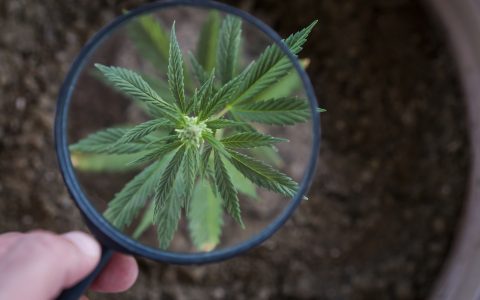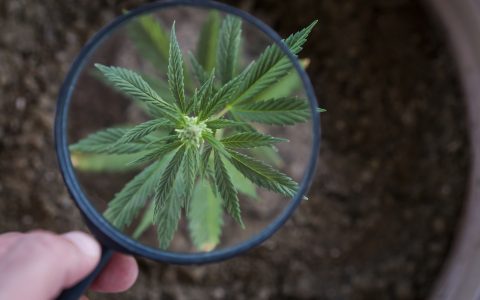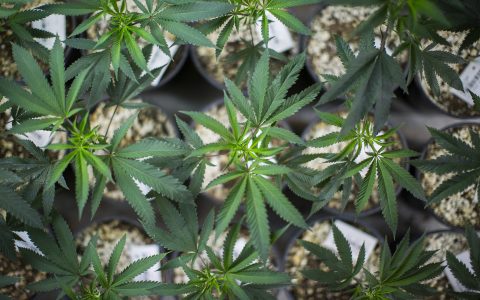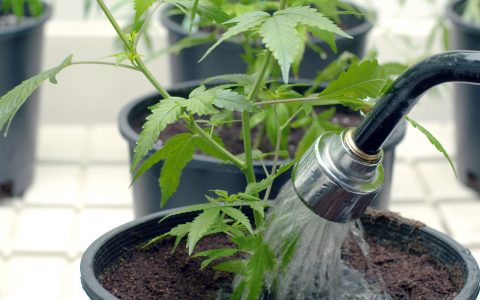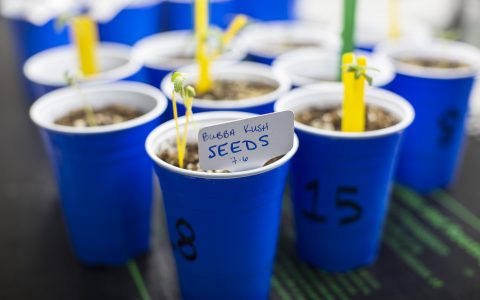The source of a healthy cannabis plant is a healthy root system. Roots provide a network for collecting and transferring water, oxygen, and nutrients to your growing plants.
These three things are pulled from the soil into the root system and transferred to the rest of the plant and help keep the process of photosynthesis and plant growth going. Without developed roots, a plant can’t grow properly.
The photosynthesis process kicks off when water touches a plant’s roots. Water, carbon dioxide, and stored sunlight then work together to produce sugars necessary for growth in the plant.
These sugars, in combination with oxygen taken in by the roots, create ATP energy for the plant. ATP energy, in combination with nutrients pulled from the soil, ensures that the plant grows vibrantly.
Without a functioning root system, any of these basic functions can fail and result in a sick plant. When a plant is young, many gardeners choose to focus on the development of its roots rather than the actual plant to ensure it’ll be healthy and strong until harvest.
Oxygen
As mentioned above, roots uptake oxygen during cellular respiration, a process in which ATP energy is created. Without oxygen, the plant won’t be able to create the energy needed for it and the roots to keep growing.
To keep a healthy flow of oxygen into the root system, here are some tips:
- Let soil dry in between waterings. When soil is saturated, it can’t breathe effectively; as it dries up, the roots pull oxygen in. Dry periods between waterings are essential for oxygen absorption.
- Use a smart pot. These pots are made of a porous material that allows oxygen to seep in through the sides. Plants buried in the ground or in hard pots are limited to intaking oxygen from the surface.
- Perlite, vermiculite, and peat moss. These materials help fluff up soil, giving more space for oxygen to flow through and to keep soil from compacting.
- Use complete soils. These promote life for fungus, insects, and microbes that help keep soil loose, allowing for the development of root networks throughout the soil.
In hydroponic systems, make sure your roots are always submerged in water, and use a dissolved oxygen meter to make sure plants are receiving enough dissolved oxygen.
When growing outdoors, if tilling soil, make sure to keep off the soil as much as possible to prevent it from compacting, which prevents oxygen flow.
Warmth
Roots are active at night and happiest around 75°F (24°C). With an indoor setup, a good tip is to set up your air intake below the canopy and your exhaust above the canopy to keep a fresh, healthy cycle of air.
If growing outdoors, growing a cover crop—like clover—with your cannabis plants can keep soil temperature more consistent, while also protecting the topsoil layer.
Spreading mulch or hay around the base of your plants can also help regulate temperature, but be sure to keep a 6-inch radius around the stalk of each plant free, as excessive moisture in the mulch can lead to rot if it touches the stalk.
Proper Watering
Roots are constantly on the hunt for water as they grow and move farther away from the main taproot. As your plant gets bigger, so should your watering radius—the area around the stalk of the plant that you water. Doing this will help guide roots to the edges of the pot as they seek available nutrients in the soil.
But watering too far away from where the roots currently are can create standing water, which can lead to root rot, mold, and pest issues.
As mentioned above in regards to oxygen, topsoil should be sufficiently dry before watering the plant again. To see if a plant is ready for more water, feel for dryness by putting your fingers 2-3 inches down.
Space
Roots need plenty of space as they grow out and explore for water, oxygen, and nutrients. When cramped, a plant’s root system can strangle itself, becoming root bound. Roots can begin to die off and root rot can set in, possibly killing the plant entirely.
Be sure to put a plant in a big enough pot, anticipating how big it’ll get by harvest time. If a plant gets too big for its original pot, transplant it to a bigger one, adding more soil. If planting in the ground, it’s even more important to give it plenty of space, as you won’t be able to move it.
To see if a pot is too small, observe the roots from the drainage holes of the pot—if you see roots crossing over the holes, then it’s time to transplant it to a bigger pot.
Be sure to check the roots before flowering, as the plant shouldn’t be moved or repotted during that phase.
Give Your Roots Some Friends
Plant roots interact directly with mycelium, the substance that mushrooms sprout from. Mycelium helps make nutrients available to plant roots and helps roots find water. In exchange, a plant sends down carbon, helping the mycelium grow and expand its own network.
This symbiotic relationship—called mycorrhiza—is important in keeping roots healthy so they can access all available nutrients.
Complete soils contain mycelium and are a good way to start using it. There are also mycorrhizal powders that can be added to soil when potting your plant.
Compost teas will also help keep your soil full of beneficial insects, microbes, and bacteria that in turn will help keep nutrients available for your roots.
Next time you repot your plants, take a moment to observe its roots and see if they need any attention. A healthy bunch of roots is critical to growing a healthy cannabis plant—and flowers you’ll be proud to harvest.


